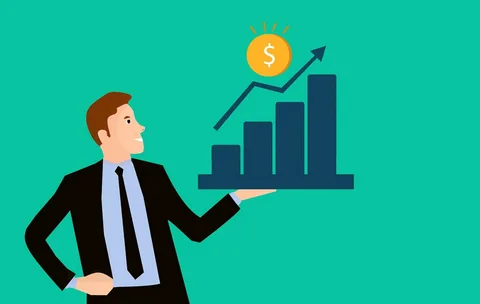A company’s income statement, a profit and loss or P&L, tallies a business’s earnings and expenses over a specified period. It can cover a month, quarter, or year and is generally prepared at the end of each business period. Several lines are commonly seen on every income statement, including revenue, costs of goods sold (COGS), sales and marketing expenses, general and administrative costs or SG&A, prepaid expenses, losses, and net income.
Revenue is the first line item on an income statement and displays how much money a company earned from product or service sales in the reporting period. It may be listed as gross sales or, more often, with reductions like discounts, returns, and allowances deducted to provide an intermediate total called net sales revenue. Different revenue streams can also be listed separately on the income statement if there are multiple sources of revenue.
Expenses are the next line items on an income statement and display how much a company spent on operating activities in the reporting period. Expenses are grouped into functional areas and broader categories such as selling, general and administrative costs, or research and development expenses. One-time or irregular expenses, such as write-offs of obsolete assets and payments from lawsuits, are typically categorized in a separate section on the income statement.
Once all revenue and expenses are accounted for, the net income is displayed at the bottom of the income statement. Net income is the difference between revenues and expenses and is sometimes reported as a percentage of total revenue to make it easier to compare with competitors.
The income statement is used by internal company management, investors, and creditors to gain insight into a business’s financial performance in the past period and to assess its future potential. Investors review the income statement to understand a company’s financial standing and determine whether or not it is worth investing in, while creditors examine income statements to see if the company has sufficient cash flow to repay loans. The income statement is also used to prepare tax returns for the company.
What is an income statement report?
The income statement, also known as the profit and loss statement (P&L) or earnings report, measures your business’s revenues and expenses over a period of time to calculate your company’s net income for that period. It is often combined with other core financial statements, such as the balance sheet and cash flow statement.
To prepare an income statement, you must first determine the reporting period for which it will be prepared. This period may be a month, quarter, year, or other time frame. Publicly traded companies often publish yearly income statements, while smaller businesses may create them monthly or quarterly. Once you know the period for which you will be preparing the statement, you must generate a trial balance report from your accounting software system. This report will contain the ending balances of all accounts in your general ledger for that reporting period.
Next, you must record all of your company’s revenue and expenses during that period. You can classify revenue as either operating or non-operating. Expenses can be further classified as either functional or non-functional. An example of a functional expense would be the cost of goods sold, while an example of a non-functional expense would be interest expenses. You must then subtract all of your operating expenses from your total revenues to calculate your company’s net income for the reporting period.
An important note about income statements is that they are often based on accrual accounting principles, which means that your company recognizes revenue when it is earned, regardless of whether the cash has been received at that point. This is a major difference from cash flow statements, which are typically based on actual cash receipts and outflows.
The most common format for an income statement includes a section for each of the revenue and expense classifications, with an intermediate subtotal for each category. This is sometimes referred to as a multi-step income statement, as it requires multiple subtraction steps to get to the bottom line. For instance, a typical income statement includes sections for revenue or sales; cost of goods sold; gross profit; selling, general and administrative expenses; other operating expenses; gain or loss from discontinued operations; and income tax expense.
What is a profit and loss statement report?
A profit and loss statement (P&L) report summarizes your business sales and expenses for a specific period. The P&L statement can be used to compare your business’s performance to the competition and help you make more informed decisions about marketing strategies, pricing, cost-cutting, and other operational activities.
The first line item on a P&L statement is total company revenue. This includes the total amount of money coming in through your door, such as cash and credit card payments, plus any other sources of income you might have, such as interest or dividends from investments or a sale of assets. The next line item is the total cost of goods sold. This is what it takes to produce your products or services. It can include inventory costs, the price of materials and supplies, wages and salaries for employees who produce goods and services, and other operational expenses. These expenses are subtracted from revenue to determine the period’s total operating income or gross profit. Nonoperating expenses, such as loan interest payments and taxes, are deducted from the operating income to calculate the period’s net profit or net earnings.
If your business has a positive net profit, it means that you are making more than you are spending on operations. This is a good thing and can enable you to invest in your business, receive loans, pay dividends to shareholders, or reward employees. If the opposite is true, it’s a negative or loss, and you need to improve your bottom line by either decreasing expenses or increasing revenue.
It is common for companies to break out certain revenues and expenses on their P&L statements that don’t relate to their normal operations, such as interest or dividend income from investments or taxes paid on company assets. This information is then added to or subtracted from the total operating income to calculate the final net profits, which can be compared to other companies in your industry. FreshBooks Support team members are not accountants or tax professionals and cannot provide advice on these topics beyond supporting questions about the use of our software to prepare your company’s financial statements.
What is a balance sheet report?
A balance sheet report is a snapshot of your company’s financial status at a moment in time. It shows what your business owns (assets), what it owes (liabilities), and how much is left over (owner’s equity). It does not include detailed information on transactions that took place during the reporting period; this detail is found in the profit and loss statement.
The first section of a balance sheet lists your business’s assets, including things like inventory, equipment, and even your cash. Assets are usually sorted into categories based on their convertibility to cash and physical existence. Those assets that can be turned into cash within a year are listed as current assets, while those that require more than a year to get your money’s worth are called long-term assets. Finally, intangible assets, such as patents and trademarks, are also included in your business’s list of assets. Your business’s long-term assets can be depreciated over their life spans to show how their value is being reduced, which is one way your company reduces its liabilities.
Your business’s liabilities are then shown in a second section of the balance sheet. These are the amounts that your business owes to others, and they are categorized as either current or long-term. The current liabilities category includes accounts payable and short-term loans. The long-term debt section includes mortgages, leases, and lines of credit. The third and final section of the balance sheet is your shareholders’ equity, which displays the monies that your business’s owners have invested in the company. For sole proprietorships, this is your personal investment in the business; for corporations, it’s the amount of money that shareholders have invested in the company.
A good balance sheet should end with your company’s total assets equaling its total liabilities and shareholders’ equity. If it doesn’t, the document may have a problem, such as an error in currency exchange rates or inventory levels, miscalculations of your company’s equity, or miscalculations of depreciation and amortization. You can solve these problems by examining the details in the other core financial statements, such as the profit and loss statement and the cash flow statement.





